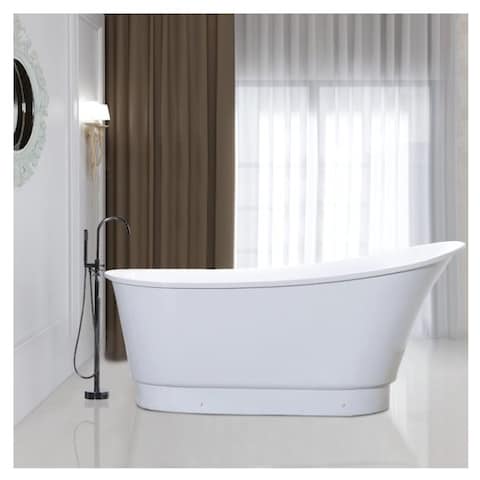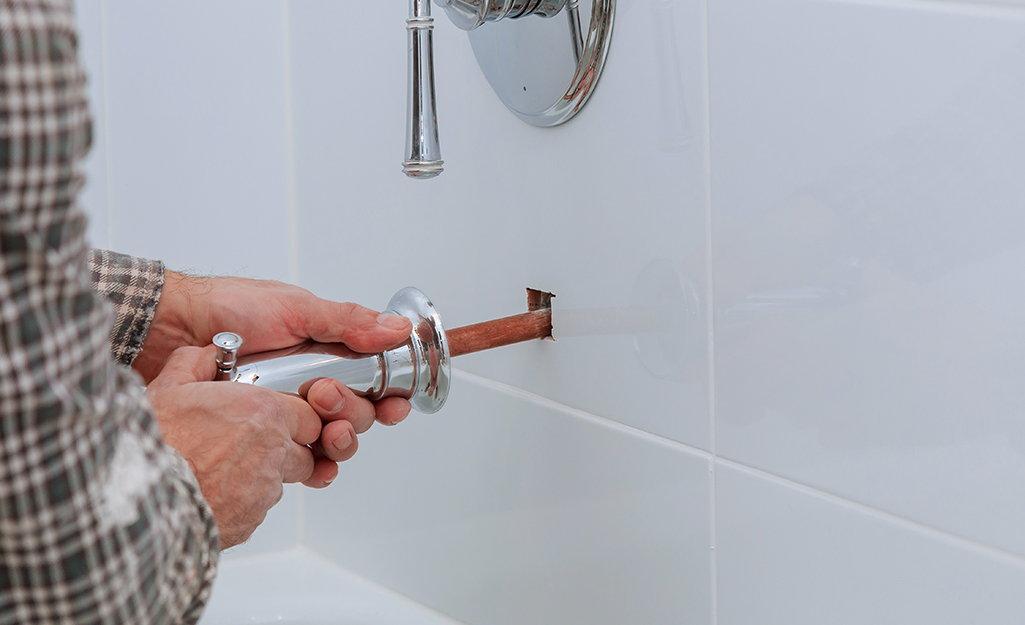Do It Yourself Bathtub Installation.
Do It Yourself Bathtub Installation.
Blog Article
Everybody has got their personal piece of advice when it comes to Installing A Bathtub.

Setting up a bathtub isn't specifically rocket science, however it does call for solid plumbing, woodworking, and occasionally, tiling skills. Replacing an old bath tub with a new one is also a reasonably challenging task. If the old tub is readily obtainable, the project can relocate immediately; if you have to open up a wall to remove the old bathtub as well as place the brand-new bathtub, the job is much harder. In either instance, the job is within a home handyman's abilities, although you will require a helper to vacate the old tub and also set in the brand-new one. Make certain you have certified yourself for the task and fit attempting it. As opposed to hiring a specialist to take over a halfway-completed project, it is better to consider employing one before you begin. Opportunities are you might need a professional plumber to make tube links.
This post will aid you set up a new bath tub in your shower room if you have already gotten a new tub as well as don't require to alter the arrangement of your previous water pipelines.
Your tools and also material list must comprise the following:
Preparing for the Setup
Firstly, the sustaining frame provided with the bath must be fitted (if required) according to the maker's instructions. Next off, fit the taps or mixer to the bath tub. When fitting the faucet block, it is essential to make certain that if the tap includes a plastic washer, it is fitted in between the bath as well as the faucets. On a plastic bath, it is additionally practical to fit a sustaining plate under the taps device to prevent pressure on the bathtub.
Fit the adaptable tap ports to the bottom of both taps making use of 2 nuts and olives (often supplied with the tub). Fit the plug-hole electrical outlet by smearing mastic filler round the sink electrical outlet hole, and after that pass the electrical outlet via the hole in the bath. Use the nut supplied by the maker to fit the plug-hole. Examine the plug-hole outlet for an inlet on the side for the overflow pipe.
Next, fit completion of the versatile overflow pipeline to the overflow electrical outlet. After that, screw the pipe to the overflow face which need to be fitted inside the bath. Ensure you utilize every one of the supplied washers.
Attach the catch to the bottom of the waste outlet on the bathtub by winding the string of the waste electrical outlet with silicone mastic or PTFE tape, and screw on the trap to the electrical outlet. Attach the bottom of the overflow tube in a similar manner.The bath must currently be ready to be fitted in its last placement.
Removing Old Touches
If you need to replace old faucets with brand-new ones as a part of your installment, then the first thing you ought to do is detach the water. After doing so, turn on the taps to drain any type of water continuing to be in the system. The procedure of removing the existing taps can be rather troublesome as a result of the limited accessibility that is frequently the situation.
Utilize a container wrench (crowsfoot spanner) or a faucet device to reverse the nut that attaches the supply pipelines to the faucets. Have a towel ready for the remaining water that will come from the pipes. When the supply pipes have actually been eliminated, make use of the very same device to loosen up the nut that holds the faucets onto the bath/basin. You will certainly require to quit the solitary faucets from transforming throughout this procedure. As soon as the faucets have actually been gotten rid of, the holes in the bath/basin will certainly need to be cleansed of any kind of old securing substance.
Prior to going on to fit the brand-new faucets, contrast the pipeline links on the old faucets to the brand-new faucets. If the old faucets are longer than the brand-new taps, then a shank adapter is required for the new faucets to fit.
Setting up the Bath tub
Making use of both wooden boards under its feet, place the bathtub in the required setting. The wood boards are valuable in evenly spreading the weight of the bathtub over the location of the boards as opposed to focusing all the weight onto four small factors.
The following objective is to make sure that the tub is leveled all round. This can be accomplished by checking the spirit level and also adjusting the feet on the tub up until the spirit level reads degree.
To mount faucets, fit the bottom of the furthest adaptable faucet port to the appropriate supply pipeline by making a compression sign up with; then do the same for the other faucet.
Turn on the water as well as inspect all joints as well as new pipework for leaks and tighten them if necessary. Load the bath tub as well as likewise inspect the overflow outlet and the regular electrical outlet for leakages.
Lastly, repair the bath paneling as defined in the supplier's user's manual. Tiling as well as sealing around the bathtub needs to wait up until the tub has been made use of at the very least when as this will settle it right into its last position.
Fitting New Touches
If the tails of the brand-new taps are plastic, after that you will certainly need a plastic adapter to avoid damage to the string. One end of the adapter fits on the plastic tail of the tap and the various other end supplies a connection to the existent supply pipelines.
If you need to fit a monobloc, after that you will require minimizing couplers, which links the 10mm pipe of the monobloc to the standard 15mm supply pipeline.
Next, place the faucet in the mounting opening in the bath/basin making sure that the washers remain in location between the faucet and the sink. Safeguard the tap in place with the maker offered backnut. As soon as the tap is firmly in position, the supply pipes can be attached to the tails of the faucets. The faucets can either be connected by utilizing corrugated copper piping or with typical tap adapters. The previous type needs to be linked to the tap finishes initially, tightening just by hand. The supply pipelines can later be attached to the other end. Tighten both ends with a spanner after both ends have actually been linked.
Tiling Around the Bathtub
In the location where the bath fulfills the ceramic tile, it is necessary to secure the joins with a silicone rubber caulking. This is important as the installation can move sufficient to break a rigid seal, triggering the water to penetrate the wall surface between the bathroom and the tiling, bring about problems with moisture and feasible leaks to the ceiling listed below.
You can choose from a selection of coloured sealants to assimilate your fixtures as well as fittings. They are offered in tubes and cartridges, as well as can sealing spaces up to a width of 3mm (1/8 inch). If you have a bigger space to load, you can fill it with spins of soaked paper or soft rope. Bear in mind to always load the bath tub with water before securing, to allow for the motion experienced when the bathtub is in usage. The sealant can break rather early if you do not think about this movement prior to securing.
Alternatively, ceramic coving or quadrant floor tiles can be used to edge the bathroom or shower tray. Plastic strips of coving, which are easy to use and also cut to dimension, are additionally easily offered on the marketplace. It is recommended to fit the ceramic tiles making use of water-resistant or water resistant glue and grout.
Bathtub Installation
How Important Is A Bathtub To Your Home?
High-quality baths, showers, and other bathroom updates are necessary when considering a smart investment in your home. It’s a room that you go to every day and one that is constantly being used by guests.The bathroom is one of the top trafficked rooms in a home and also one of the most valuable in terms of home resale.
Install Piping Before Tub
You will be using your existing drain and waste vent system, but pipes required include the hot and cold water supply lines and a pipe leading to a shower head. A mixing valve and shower head are also needed. Air chambers may be required.
Position the Tub
Lower the tub into place so that the continuous flange fits against the wall studs and rests on 1’x4' or 2’x4' supports. Anchor the tub to the enclosure with nails or screws inserted through the flanges into the studs.
NOTE: Remember, bathtubs and shower stalls may require support framing. A bathtub filled with water is extremely heavy, so check building codes and framing support before installing the tub.
Assemble Drain Connections
Assemble the bathtub drain connections by connecting the tub overflow with the tub drain above the trap, not beyond it. The trap will have a compression fitting that screws over the arm of the overflow assembly.
Place a Pipe For the Shower Head
First, locate a brass female threaded winged fitting and attach it to a framing support via a screw or a nail. Then run a pipe up the wall for the shower head. Sweat or solder the other side of the brass fitting to the top of the pipe.
Attaching Hot and Cold Water Lines
Attach your water lines for both hot and cold by sweating these directly into the hot and cold ports of the mixing valve. The mixing valve will be how water enters the tub’s system, not by the pipes themselves.
Install the Spout
Extend a piece of 1/2 inch pipe, or whichever length is specified in the manufacturer’s instructions, for the tub spout. Sweat on a male threaded fitting at the end of the pipe or use a brass nipple of the proper length and a 1/2 inch cap.
NOTE: At this point you should have your rough-in plumbing work inspected before proceeding further.
Check For Leaks
Restore the water pressure and check the drain connection and the supply pipes for any sign of leaking.
estore the Bathroom Wall
Replace the wall with moisture-resistant drywall as a base for your wall covering. Seal the joints between the wall and your new tub with silicone caulk as protection against water seepage.
https://www.berkeys.com/2016/12/02/bathtub-installation-dallas/

We were shown that editorial about Tools You Need to Install a New Bathtub through someone on a different domain. Please take the opportunity to distribute this blog posting if you enjoyed reading it. Thanks a lot for your time spent reading it.
Schedule Appointment Now Report this page